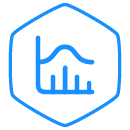Clinical Monitoring & Site Management
An Adaptive Approach to Comprehensive, High-Quality Clinical Trial Oversight
Reduce Risk With a Fit-for-Purpose Central Monitoring Approach
At Premier, we move beyond traditional fixed onsite monitoring to deliver a flexible, risk-based monitoring strategy that integrates onsite, remote, and centralized methods. Our adaptive model uses technology and data-driven insights to focus on critical quality factors, patient safety, and site performance—delivering superior oversight without unnecessary burden.
Adaptive Monitoring That Works
Our approach includes using an optimal mix of:
- Centralized data monitoring leveraging targeted analytics to identify protocol deviations, trends, gaps, or risks
- Onsite or remote source data review/source data verification (SDR/SDV) using a subject visit sampling approach
We focus on complete, logical, and timely data reporting, with special attention to critical to quality and high-risk areas like patient safety, endpoint accuracy, and protocol compliance.
Integrated Quality Risk Management (IQRM)
Premier builds a fit-for-purpose monitoring strategy for each study based on a thorough risk assessment. Our Central Monitors, Data Managers, and Medical Monitors collaborate to pinpoint vulnerabilities in data and/or processes and proactively mitigates them—strengthening data integrity.
Using our Remarque platform, we provide near real-time review of site data to:
- Rapidly identify protocol deviations and issues
- Deliver actionable insights that improve outcomes
- Guide CRA focus and optimized risk-based monitoring (RBM) strategy
Monitoring Powered by Central Monitor
Every study is assigned a dedicated Central Monitor responsible for real-time oversight of:
- Protocol compliance
- Site data entry rates and query resolution performance
- Emerging risk signals on efficacy and safety data
Data from EDC, lab systems, IVRS/IWRS, and other sources are aggregated, analyzed, and monitored at patient, site, and study levels using both foundational and custom data visualizations and key risk indications. Central Monitor reviews include:
- Assessments for missing/invalid data
- Checks for data inconsistencies
- Identification of protocol deviations
- Compliance with adverse event reporting
- Cross-validation (e.g., lab vs. EDC discrepancies)
Each insight results in risk-aligned actions—from follow-up calls to escalated site visits—ensuring proactive resolution of issues before they impact study quality.
Strategic RBM and Site Management Components:
- Custom SDR/SDV Sampling based on risk to patient safety and data integrity
- Interim Monitoring Visits (IMVs) to reinforce early protocol adherence
- Site Management Calls (SMCs) to address trends, compliance, and key issues
- Routine Site Contacts (RSCs) to follow up, support enrollment, and resolve findings
Key Elements of Our Monitoring Strategy
- Identification of Critical Data Points. Beyond primary/secondary endpoints, we identify study-specific critical data that guide both centralized and onsite monitoring focus.
- Safety-Driven Monitoring Triggers. Subject safety signals or site-specific issues trigger immediate monitoring intervention to ensure patient welfare and regulatory compliance.
- Site Process Oversight. Monitoring is focused on ICH GCP requirements and protocol compliance specific to the data and process critical to maintaining data quality and patient safety.
- Site Responsiveness. Sites are managed via performance dashboard including data entry and query turnaround time.
- Clear Documentation. We ensure monitoring requirements are explicitly detailed in the Clinical Monitoring Plan—no ambiguity, just actionable clarity.
- Dynamic Site Performance Evaluation. We continuously assess site performance—adjusting monitoring frequency based on real-world performance trends, staff turnover, or protocol deviations.
Why Choose Premier?
- Risk-Focused Monitoring aligned with global regulatory expectations
- 20% faster issue detection than traditional models
- Lower site burden with 60% of monitoring activities conducted via central monitoring
- Clear cross-functional responsibilities that improve team efficiency
- Superior quality and compliance across all trial phases
- Patient-centered focus protecting rights, safety, and data integrity
Let’s transform your clinical trial oversight together. Contact Premier today to discuss an efficient, scalable approach, built for your success.
Agility and knowledge at your fingertips
Resources

Avoiding 3 Common Pitfalls to Efficient Site Selection

What Can a Corn Analogy Teach Us About Smarter Trial Oversight?
resources
Stay ahead of the curve by browsing our extensive library of white papers, case studies, blog posts, and more.






